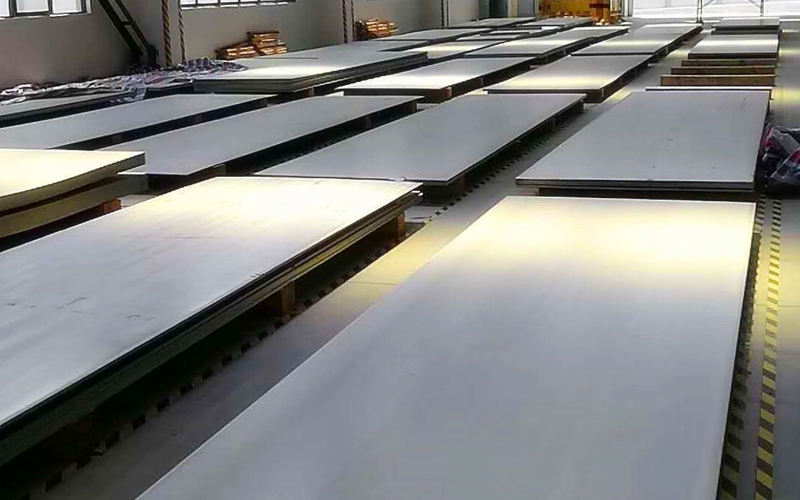Compared to austenite, ferritic types have useful mechanical properties at ambient temperature, but limited ductility. Due to loss of impact toughness and loss of strength at elevated temperatures above about 600°C, they are not suitable for low temperature applications, although they have been used very successfully in applications such as automotive exhaust systems. The austenitic type has its characteristic face-centered cubic 'fcc' atomic arrangement with quite different properties. Mechanically, they are more ductile and impact tough at low temperatures. The main physical property difference from other types of stainless steels is that they are "non-magnetic", i.e. have lower relative permeability, as long as they are fully softened. They have lower thermal conductivity and higher thermal expansion rates than other stainless steel types. The duplex type, which has a "mixed" structure of austenite and ferrite, has some of the properties of these types, but is fundamentally mechanically stronger than the ferritic or austenitic types.
Forming, manufacturing and joining techniques for stainless steel materials, depending on their type and heat treatment conditions, forged stainless steel can be formed and machinable. Stainless steel can also be cast or forged into shape.
Most of the available types and grades can be joined by using the appropriate "hot" method, including welding, brazing and soldering. Austenite is suitable for a wide range of applications involving flat product forming (pressing, drawing, stretch forming, spinning, etc.). Although ferritic and duplex stainless steels are also suitable for these forming methods, the excellent ductility and work-hardening properties of austenitic stainless steels make them a better choice.
The formability of the austenitic type is controlled by the nickel level. Grade 301 (1.4310) has a low nickel content of about 7%, so it hardens when cold worked, making it useful for pressing "hardened" panels.

Conversely, a nickel content of about 8.0% makes the steel very suitable for stretch forming operations, such as in the manufacture of stainless steel sinks. Deep drawing requires a nickel content of around 9.0%.
Martensite is not easily formed, but is widely used in the manufacture of cutting blades. Most stainless steel types can be machined by conventional methods, as long as their strength and work hardening properties are allowed. Techniques involving control of feeds and speeds to weaken the work-hardened layer with good lubrication and cooling systems are usually sufficient.
Machining grades may be required in the case of high-throughput systems. In this regard, stainless steel is treated in a similar way to other alloy steels, and the addition of sulfur is the traditional method for 303 (1.4305) grades. Controlled cleaning types are now also available for enhanced machinability.
Most stainless steels can be welded or brazed, as long as care is taken in surface preparation and flux selection is made to avoid the natural surface oxidation properties becoming a problem during these heat treatments. However, the strength and corrosion resistance of such joints do not match the full potential of the stainless steel being joined. To optimize joint strength and corrosion resistance, most stainless steels can be welded using a variety of techniques. The weldability of ferritic and duplex stainless steels is good, while the austenitic type is classified as excellent for welding. Low carbon martensite can be welded with care, but grades such as 17% Cr, 1% carbon, 440 (1.4125) are not suitable for welding.